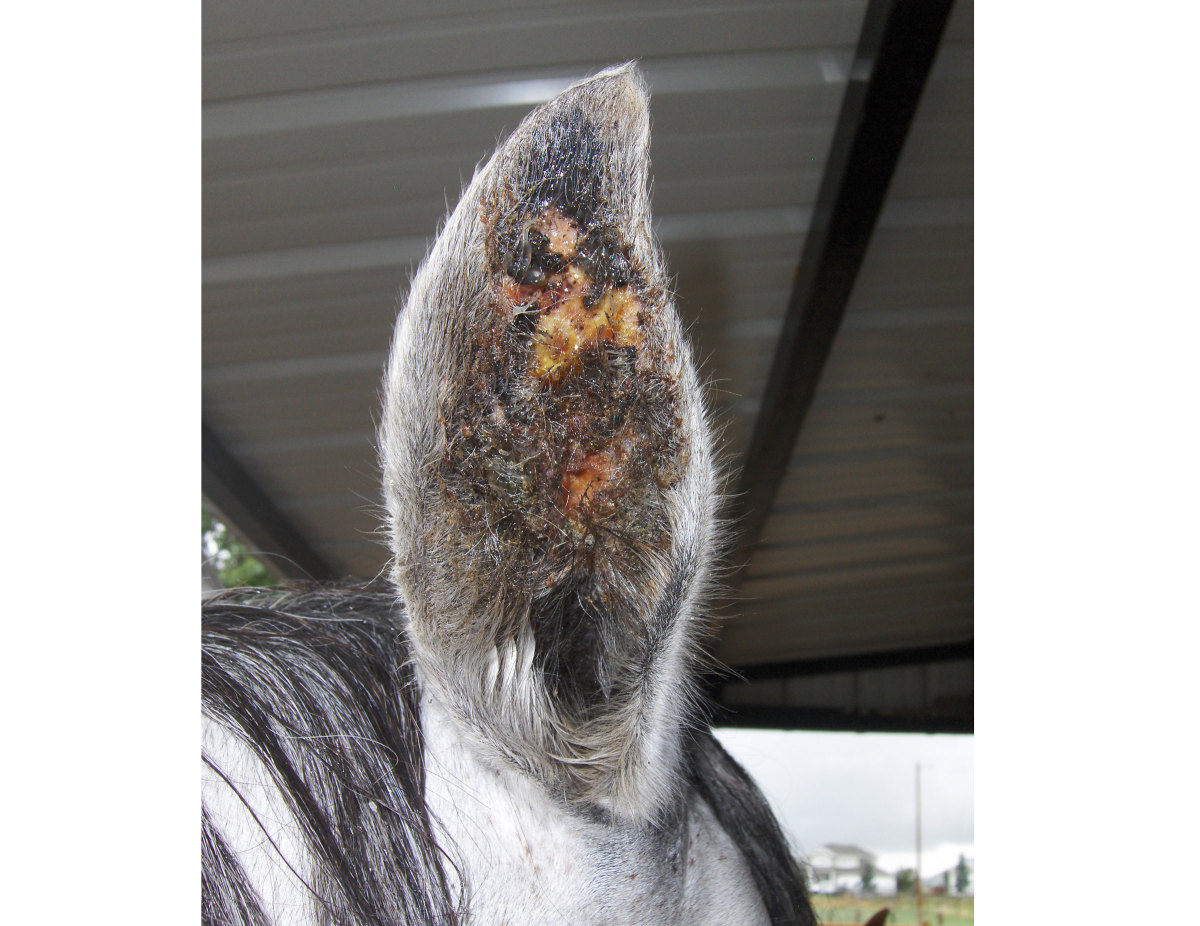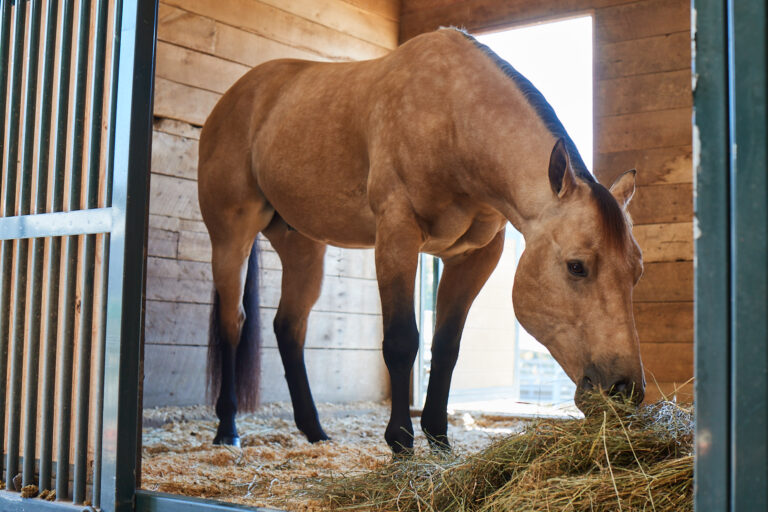
Vesicular stomatitis (VS) is a viral disease of horses and other livestock caused by vesicular stomatitis virus (VSV), which is endemic in southern Mexico and only occasionally moves northward into the United States.
The clinical disease is characterized by vesicular (blister-like) lesions on the muzzle, lips, tongue, ears, udder, sheath or coronary bands. While the lesions usually heal on their own, some horses require supportive care.
A 2019 outbreak of VSV was the largest in recent history, with 1,144 premises affected in eight states (Colorado, Kansas, Nebraska, New Mexico, Oklahoma, Texas, Utah and Wyoming).
VS returned this year on April 13, 2020, with equine premises in Arizona, New Mexico, Texas and Nebraska affected. Expansion of the disease to other states is expected this summer. Taking steps now to prevent VSV transmission on equine premises is imperative to limit the spread.
VSV is spread two ways; natural transmission by insect vectors or direct contact with infected animals.
Mitigation strategies targeting insect vectors and implementation of biosecurity to prevent contact with infected animals and contaminated fomites (shared water troughs, feed buckets, tack or equipment) are thought to be the best methods of disease prevention. Known competent insect vectors include black flies (Simulium spp.), sand flies (Lutzomyia spp,), and biting midges (Culicoides spp.), but other insects also might transmit the disease.
These insect vectors emerge in specific habitats, which helps target implementation of mitigation strategies.
Sand flies prefer dry areas, such as tree holes, rock crevices, and animal burrows.
Biting midges prefer wet areas, such as wet leaves and mud around ponds or troughs.
Black flies prefer flowing water, such as irrigation ditches, rivers or streams. Adult flies move outward from these areas.
Some insects can only fly short distances (sand flies), but others fly longer distances (black flies) or travel on wind currents (black flies, midges).
Seasonality of the vectors coincides with warmer months, spring through fall, but midges can be more cold-hardy and occasionally transmit VSV in winter.
Preferred feeding/biting times vary, with sand flies being night feeders, biting midges feeding around sunrise and sunset, and black flies feeding during the day.
Vector mitigation strategies should be considered at the neighborhood, premises, barn and animal level.
At the neighborhood level, keep animals away from insect emerging sites such as moving water and standing water during the insect seasons. Alternatively, time the rotation of animals through pastures to avoid grazing near a stream returning to base flow after reaching peak runoff, a time of black fly emergence. If possible, move animals to higher-elevation pastures during the vector season.
At the premises level, removing manure regularly, maintaining sloped and well-drained footing around water sources, and keeping surrounding vegetation mowed will also reduce insect vectors.
At the barn level, move animals indoors during vector feeding times or provide access to a run-in shed for pastured horses.
Installing mesh netting or repellent-treated fabrics on barn openings can further prevent vector entry. Minimizing the use of bright lights at night and adding fans blowing down onto horses can also be preventive.
At the animal level, topical insecticides and repellents reduce exposure to biting insects, but repeated application is necessary and must be combined with insect mitigation at the other levels to be effective. Using fly sheets, masks, leg wraps, and ear covers with or without repellent fabric are also animal-level mitigations, but these must cover the areas where VSV lesions occur. Therefore, chemical repellents might need to be used in conjunction with fly sheets and masks to protect the muzzle and lips.
Mitigation strategies and biosecurity measures at multiple levels are needed to provide adequate protection from VSV.
For more information access “Management Strategies for Reducing the Risk of Equines Contracting Vesicular Stomatitis Virus in the Western United States.”
This article was authored by Angela Pelzel-McCluskey, DVM, MS, Equine Epidemiologist with USDA-APHIS-Veterinary Services.









